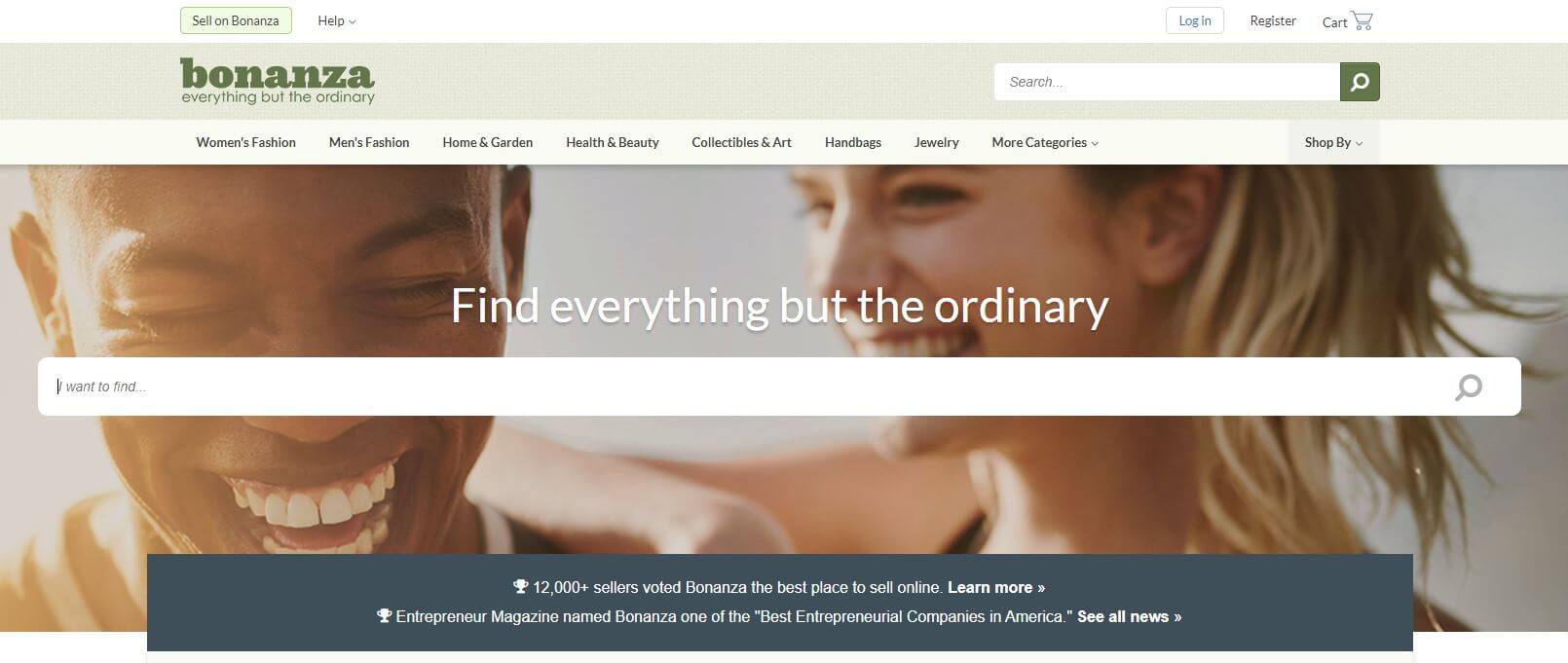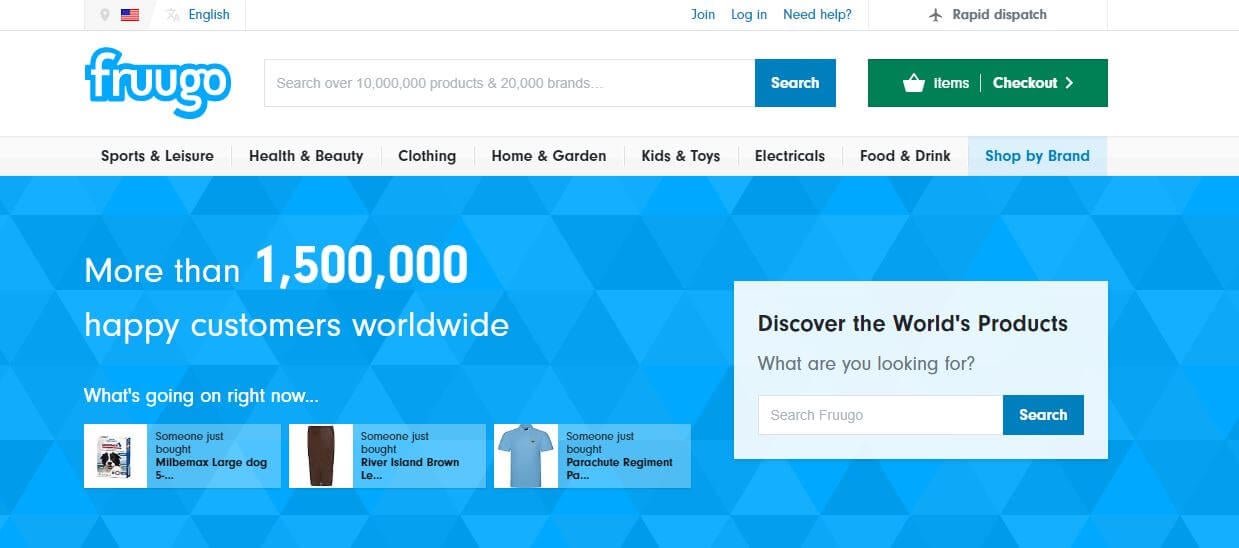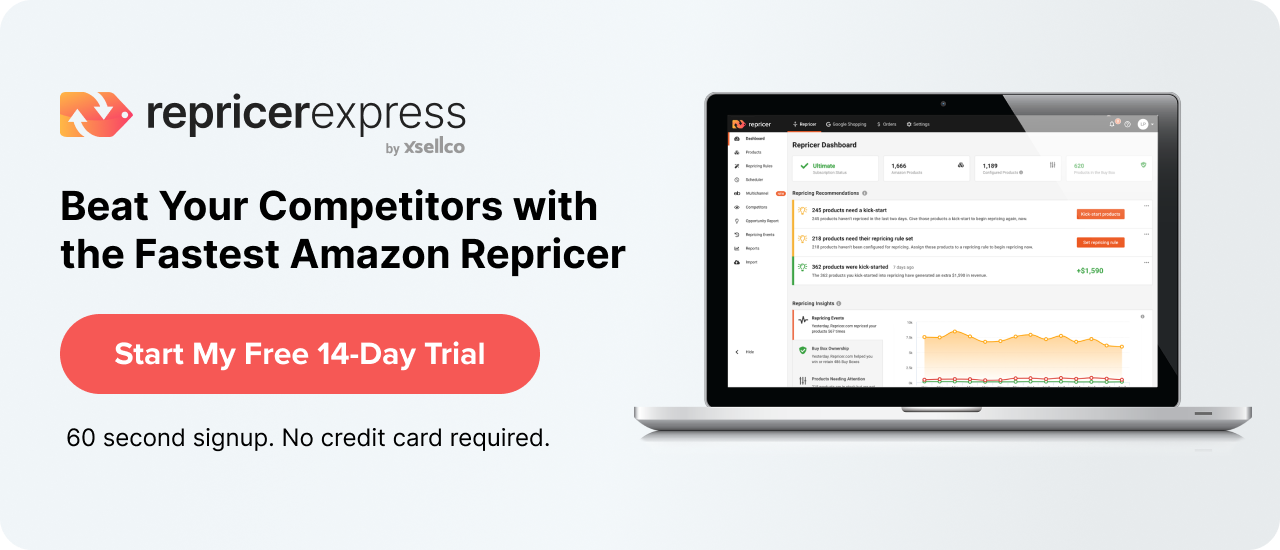You know the saying, “Don’t put all your eggs in one basket”? The same can be said for selling on Amazon. While the marketplace giant can be a great way to cross paths with millions of buyers, it may not be right for everyone. For Amazon alternatives you can consider as a seller, RepricerExpress has these six options.
1. Jet.com

While Walmart.com acquired Jet.com in 2016, the latter continues to operate as its own retailer. But one big thing they share in common is offering the lowest price to buyers, although Jet.com increases discounts based on customer actions, like adding more items to cart, using their email address, forgoing free returns, and more.
It’s fairly simple and straightforward to sell on Jet.com. If you’re a U.S.-based business, all you have to do is apply and you’ll most likely be accepted. If you are, note that you’ll need to integrate with its API, which means investing in an inventory management system. Once you’re all set up, you’ll find a fairly simplified approach, with most categories (but not all) requiring a 15% commission.
2. Walmart

Piggybacking off the first entry is Walmart, one of the world’s largest retailers with more than 100 million unique visitors each month. Getting access to that kind of buyer pool is no small deal, especially considering its online sales continue to climb each year.
The downside of selling on Walmart is it can be tough to break into. Because they command such a powerful online presence, they can afford to be choosy with accepting which retailers they’ll allow to sell on their site. You’ll need solid credentials and the patience to wait up to a few weeks for your application to be processed/approved.
But if you do get in, there are several perks you can look forward to. One of the biggest is no listing fee; you only pay category-specific referral fees. And if that isn’t enough, how about this: you don’t need to pay for a seller account.
3. Newegg

When it comes to selling electronics online, it’s tough to think of a better marketplace than Newegg. They first started in 2000 as a first-party retailer before moving to a third-party marketplace 10 years later, with more than 10 million unique visitors each month.
Newegg shares many things in common with Amazon, like offering their own fulfilment service (Shipped by Newegg) that’s very similar to Fulfillment by Amazon and Buy Box-style listings. But one way in which they depart quite drastically is by only charging category commission fees and doing away with listing fees.
4. Bonanza

While considerably smaller than the first three entries with an average of about 300,000 unique monthly visitors, Bonanza stands strongly on its own by building a reputation based on customer loyalty. Sellers are encouraged to grow relationships with buyers, with the idea that warmth will win out over just low prices.
Because it’s a smaller marketplace, Bonanza offers more perks to its buyers than the average site. If you’re accepted, you can look forward to things like free design templates and no transaction fees. You’re only charged when a buyer orders something, with your fee varying on what the final offer value is (product price, plus shipping costs if that’s over $10). What’s neat about their fee structure is it’s tiered, so if you breakthrough into a higher final offer value, then your fee in that new bracket is less than the previous one.
5. Fruugo

Rounding out our list is this Amazon-eBay hybrid-like marketplace. Fruugo, which will seem familiar with its listing requirements of the product title, product description and images, is a global entity, with 23 marketplaces around the world.
However, the similarities to Amazon and eBay end there. You’re not allowed to have seller-specific branding, which could limit your growth as a private label. But what Fruugo takes away in that area they make up for in seller-friendly fees. You’re not charged to list products and only need to pay a 15% commission on the sales prices.
6. eBay

Last but certainly not least is eBay. eBay was launched in 1995 and is now a household name. The online marketplace is very similar to Amazon but hey differ in terms of pricing as eBay offers auction pricing alongside its Buy it Now pricing option. It’s free to set up an account and very easy to get started. eBay is extremely popular with online sellers in many different countries across the world.
You can buy products as well as selling them. And, much like Amazon, when you sell a product on eBay you pay fees on the final sale price known as eBay fees or commission in addition to listing fees for some items. Some eBay sellers can command high prices for highly sought after products such as collectables or discontinued products.
Final Thoughts
If you’ve reviewed this post and decided Amazon is the one for you after all, then you’ll need RepricerExpress in your corner to help you stay competitive. Your pricing rules and changes will run automatically in the background so you can divert your efforts elsewhere, like with scaling up or researching new products to sell. But if you’re not currently signed up, then get on board right now and we’ll start you off with a free trial.






